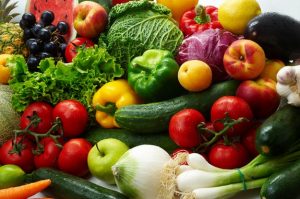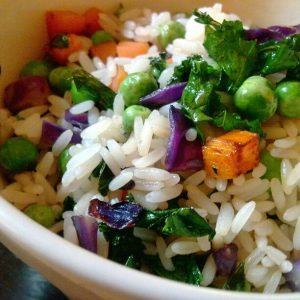
Photo by Grossmans Garden & Home
While words like kombucha, seitan, and matcha may sound like words from extinct languages, they are actually tasty food and drink items common in vegan or vegetarian diets. They are also great choices for anyone attempting to decrease their meat consumption and improve their breast health through a good diet.
The Center for Disease Control (CDC) suggests that a well-balanced eating plan is essential to the maintenance of a healthy weight and a person’s overall wellness. One of the best ways to do this is to add more fruits and veggies to your everyday eating, which allow us to have full, hearty meals without feeling deprived of something delicious or filling. They also provide our bodies with nourishing fiber that help make you feel fuller longer, help regulate blood sugar, maintain healthy bowel health, lower cholesterol, and lower breast cancer risk. A recent study published in the Journal of American Pediatrics highlights the importance of healthy eating during our teen years. The study suggests that high fiber intake during adolescence and early adulthood can reduce your overall risk of breast cancer by as much as 19%. For anybody struggling to find tasty ways to add those extra fruits and veggies, there are some simple and easy ways to incorporate them into your meals.
Vegetarian and vegan diets tend to be low in saturated fats, a key component to being healthy. Bodies need fat, but research has concluded that eating a diet high in animal fat increases the risk of breast cancer. CDC Healthy Eating Guidelines recommend that the average person should consume less than 10 percent of calories per day from saturated fats and avoid trans-fat.

Photo by Lablascovegmenu.
Just because something says “vegetarian” or “vegan” does not automatically make it good for you. Many cookies, chips, and sweetened cereals are vegetarian friendly, but contain lots of added sugar and oil. Vegetarians should also be aware of the amount of dairy they are eating. Cheese, for example, while a great source of calcium, also contains saturated fat and high amounts of sodium. Meatless eaters might find it easy to load up on processed foods such as veggie burgers but whole food options should make up the bulk of daily eating.
If going vegetarian does not work for you, consider things like Meatless Monday, eliminating just red meat, or building meals around vegetables by considering meat a side dish instead of an entree.
Looking to switch up your diet and add more veggie options? Already a vegetarian or vegan and trying to make healthier food choices? Check out our Nutrition Switch List.